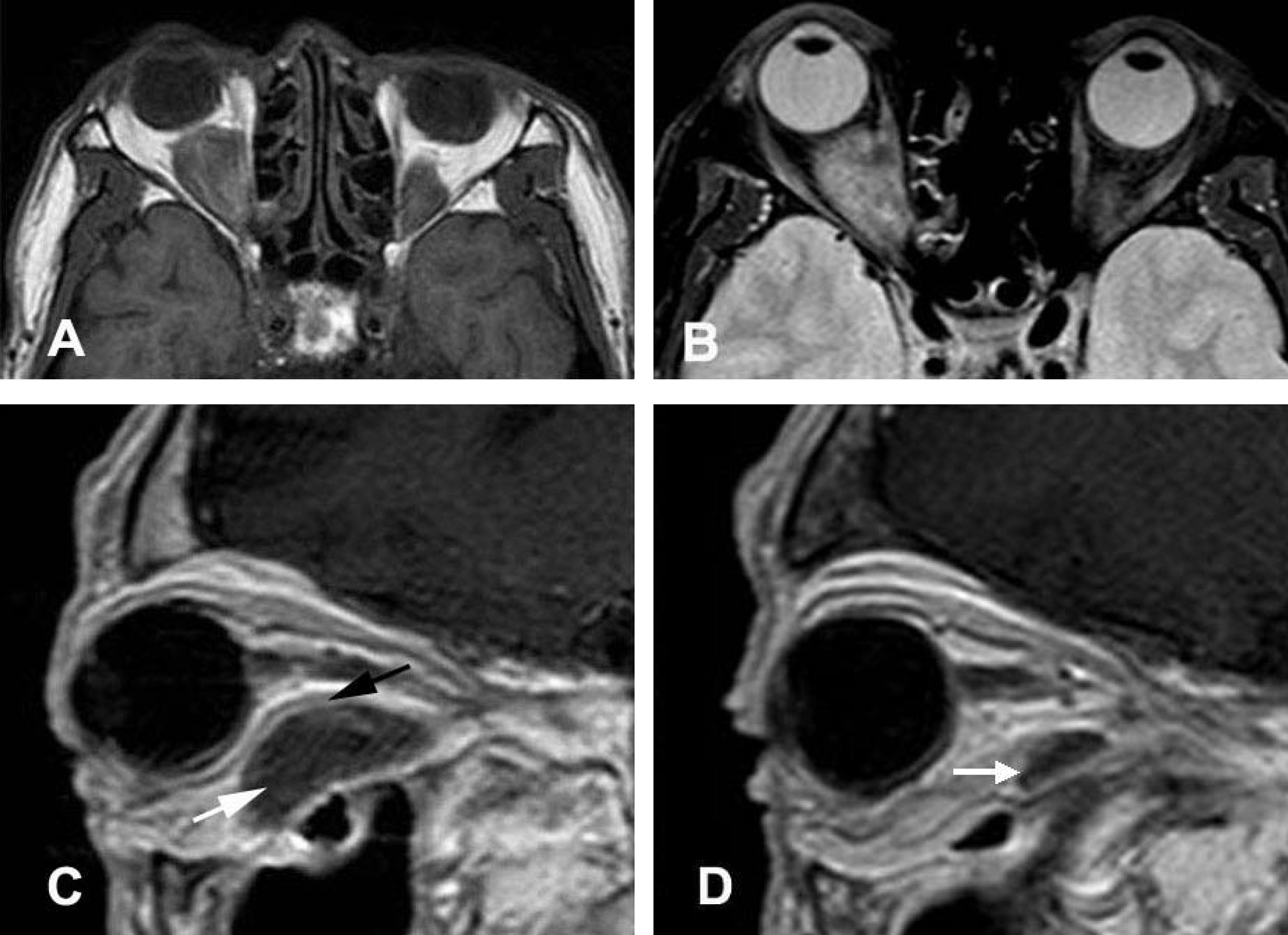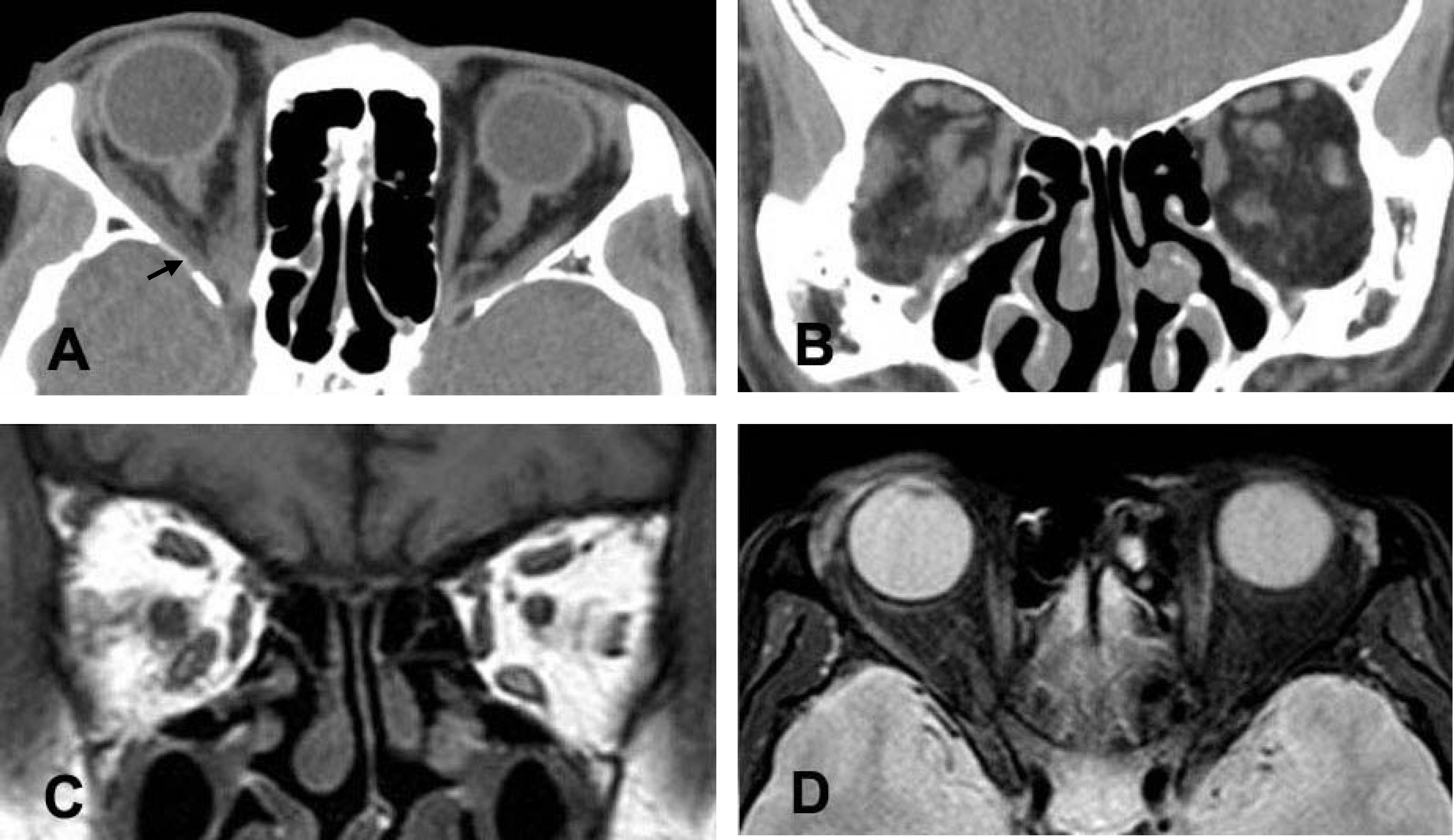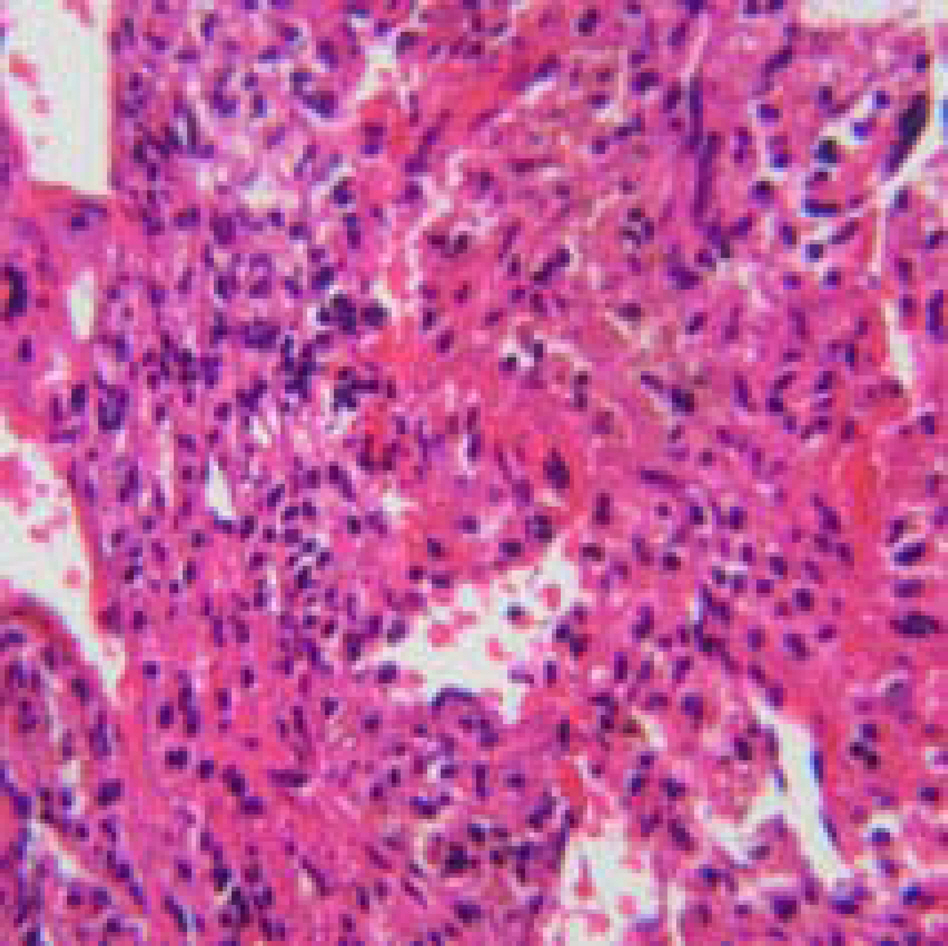J Korean Ophthalmol Soc.
2007 Aug;48(8):1151-1157.
Rapid Spontaneous Regression of Bilateral Pseudotumor
- Affiliations
-
- 1Department of Ophthalmology, Gangwon National University, College of Medicine, Gangwon, Korea. opticus@kangwon.ac.kr
Abstract
- PURPOSE: To report a rare case of bilateral pseudotumor with a two-week rapid spontaneous regression Method: A 63-year-old man visited our clinic with a chief complaint of a headache and right ocular pain. An orbital computerized tomography (CT) scan revealed a roud mass with well-demarcated capsule-like boundaries located in the inferior part of both orbits. After a systemic evaluation to exclude a systemic malignancy, we performed excisional biopsy of the right orbital mass to make diagnosis. Result: The right orbital mass was not found at the time of surgery for an excisional biopsy. Instead, we took multiple small biopsies of orbital fat, inferior rectus muscle, and adjacent soft tissues. Histologic examination revealed a non-specific inflammatory reaction without the presence of tumor cells. There was a marked spontaneous regression of the mass in both orbits on an immediate follow-up orbital CT. The patient began steroid treatment for 12 weeks under the presumptive diagnosis of bilateral pseudotumor. There was no evidence of recurrence at the eight-month follow-up.
Figure
Reference
-
References
1. Birch-Hirschfeld A. Zur Daignostik und Pathologie der Orbital-tumoren. Ber Dtsch Ophthalmol Ges. 1905; 32:127–35.2. Rootman J, McCarthy M, White V, et al. Idiopathic sclerosing inflammation of the orbit. A distinct clinicopathologic entity. Ophthalmology. 1994; 101:570–84.3. Gunalp I, Gunduz K, Yazar Z. Idiopathic orbital inflammatory disease. Acta Ophthalmol Scand. 1996; 74:191–3.4. Demirci H, Shields CL, Shields JA, et al. Orbital tumors in the older adult population. Ophthalmology. 2002; 109:243–8.
Article5. Levine MR, Kaye L, Mair S, Bates J. Multifocal fibrosis. Report of a case of bilateral idiopathic sclerosing pseudotumor and retroperitoneal fibrosis. Arch Ophthalmol. 1993; 111:841–3.6. Kim SH, Sun DY, Kim YD. Clinical characteristics of sclerosing pseudotumor of the orbit. J Korean Ophthalmol Soc. 2000; 41:2157–67.7. Wojno TH, Grossniklaus H. Inflammatory pseudotumor of the eyelid. Ophthal Plast Reconstr Surg. 1995; 11:125–30.
Article8. Rose AG, McCormick S, Cooper K, Titus JL. Inflammatory pseudotumor (plasma cell granuloma) of the heart. Arch Pathol Lab Med. 1996; 120:549–54.9. Mombaerts I, Goldschmeding R, Schlingemann RO, Koornneef L. Clinical pathological review. What is orbital pseudotumor? Surv Ophthalmol. 1996; 41:66–78.10. Devron HC, Theodore M. Orbital Pseudotumor. Fine-needle aspiration biopsy and response to therapy. Ophthalmology. 1993; 100:1702–10.11. Moseley IF, Wright JE. Orbital pseudotumor. Clin Radiol. 1992; 45:67–8.12. Hyun GH, Han SK. Atypical inflammatory orbital pseudotumor with acute pneumonic infiltration. J Korean Ophthalmol Soc. 2001; 42:1798–802.13. Andrade DM, Martins SJ, Paz O, et al. Inflammatory pseudotumor : A diagnostic dilemma. Eur J Intern Med. 2006; 17:514–6.14. Mombaerts I, Schlingemann RO, Goldschmeding R, et al. Are systemic corticosteroids useful in the management of orbital pseudotumors? Ophthalmology. 1996; 103:521–8.
Article15. Lee H, Kim SJ, Lee SY. Classification and treatment efficacy of orbital pseudotumor. J Korean Ophthalmol Soc. 2001; 42:1647–54.16. Maurer I, Zierz S. Recurrent orbital myositis: report of a familial incidence. Arch Neurol. 1999; 56:1407–9.17. Kert G, Clement CI, O'Donell BA. Clinical case notes. Orbital lymphoid tumor located within an extraocular muscle. Clin Experiment Ophthalmol. 2004; 32:651–5.18. Levy S, Sauvanet A, Diebold MD, et al. Spontaneous regression of inflammatory pseudotumor of the liver presenting as an obstructing malignant biliary tumor. Gastrointest Endosc. 2001; 53:371–4.19. Akansel G, Hendrix L, Erickson BA, et al. MRI patterns in orbital malignant lymphoma and atypical lymphocytic infiltrates. Eur J Radiol. 2005; 53:175–81.
Article
- Full Text Links
- Actions
-
Cited
- CITED
-
- Close
- Share
- Similar articles
-
- Spontaneous Regression of Inflarmmatory Pseudotumor of the Liver by Conservative Therapy
- A Case of Osteosarcoma Developed in a Patient of Untreated Bilateral Retinoblastoma
- A Case of Orbital Pseudotumor
- Ocular Protrusion and Spontaneous Regression in Bilateral Retinoblastomas
- A Case of Inflammatory Pseudotumor Cerebri and Nasal Septum






